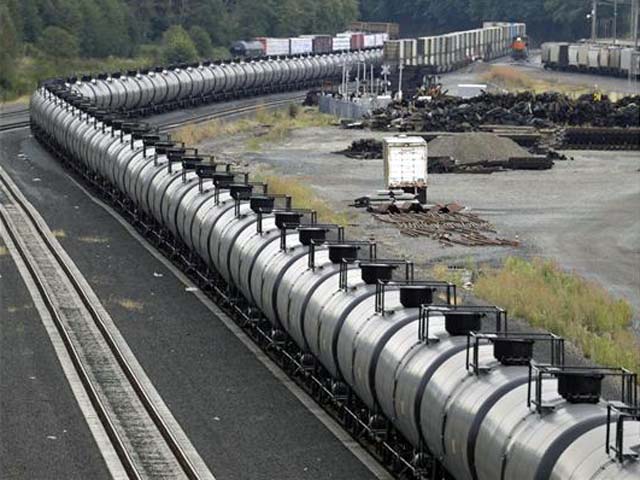
of Hardisty Rail Terminal
Hardisty Alberta - Houston Texas-based USD Group is pushing ahead with plans to double the capacity of its Hardisty rail terminal, adding heavy
crude oil, butane, and propane to the mix of products it can load onto 120-railcar unit trains and move to markets.
The current facility can load two 120-car unit trains per day.
Expanded, it could load four 120-car trains per day.
The expansion would supplement existing pipelines and "reduce transportation constraints of oil products in a cost-effective and environmentally
responsible manner," USD Group subsidiary USD Terminals Canada says in a project summary filed with the Canadian Environmental Assessment
Agency.
The summary says the decision to proceed with the project will be contingent on the development of commercial agreements with shippers.
Company officials couldn't be reached for comment Thursday, but the summary shows USD Terminals Canada wants to build nine new rail tracks and loading
infrastructure immediately north of its existing facility, 10 kilometres southeast of Hardisty.
The terminal sits alongside CP's north main line.
Hardisty, 200 kilometres southeast of Edmonton, is a major hub for the transportation of crude oil.
The environmental assessment agency decided last month that an assessment for the expansion is required because of the possibility of adverse environmental
effects.
Input received from aboriginal groups and the wider public during a 20-day comment period was another factor.
Details of the assessment process weren't immediately available.
The existing Hardisty terminal, which began operating in June 2014, can load two 120-car unit trains per day with light crude oil.
An expanded facility would allow up to four 120-car unit trains to be loaded per day.
One unit train per week could be loaded with heavy crude, and another with propane or butane.
If expanded, the rail terminal could receive shipments by truck.
Currently, all crude arriving at the facility comes via pipeline from a nearby Gibson Energy storage terminal.
In November, U.S. president Barack Obama rejected TransCanada's application to build the Keystone XL pipeline between Hardisty and Steele City,
Nebraska.
It would have helped get Canadian crude to refineries on the U.S. Gulf Coast.
TransCanada's proposed Energy East pipeline would also start in Hardisty.
It would move crude oil from Alberta and Saskatchewan to refineries in Eastern Canada.
Transporting crude by rail has come under increased scrutiny since the 2013 disaster in Lake Megantic.
In a report this week, the C.D. Howe Institute said shipping oil by rail has inherent benefits beyond reducing reliance on pipelines.
"Oil can get to market faster by rail than by pipeline and reach otherwise inaccessible markets," the institute said.
"Moreover, rail transport offers more responsiveness to changing demands, less dilution for transport, and lower capital costs."
David Howell.



